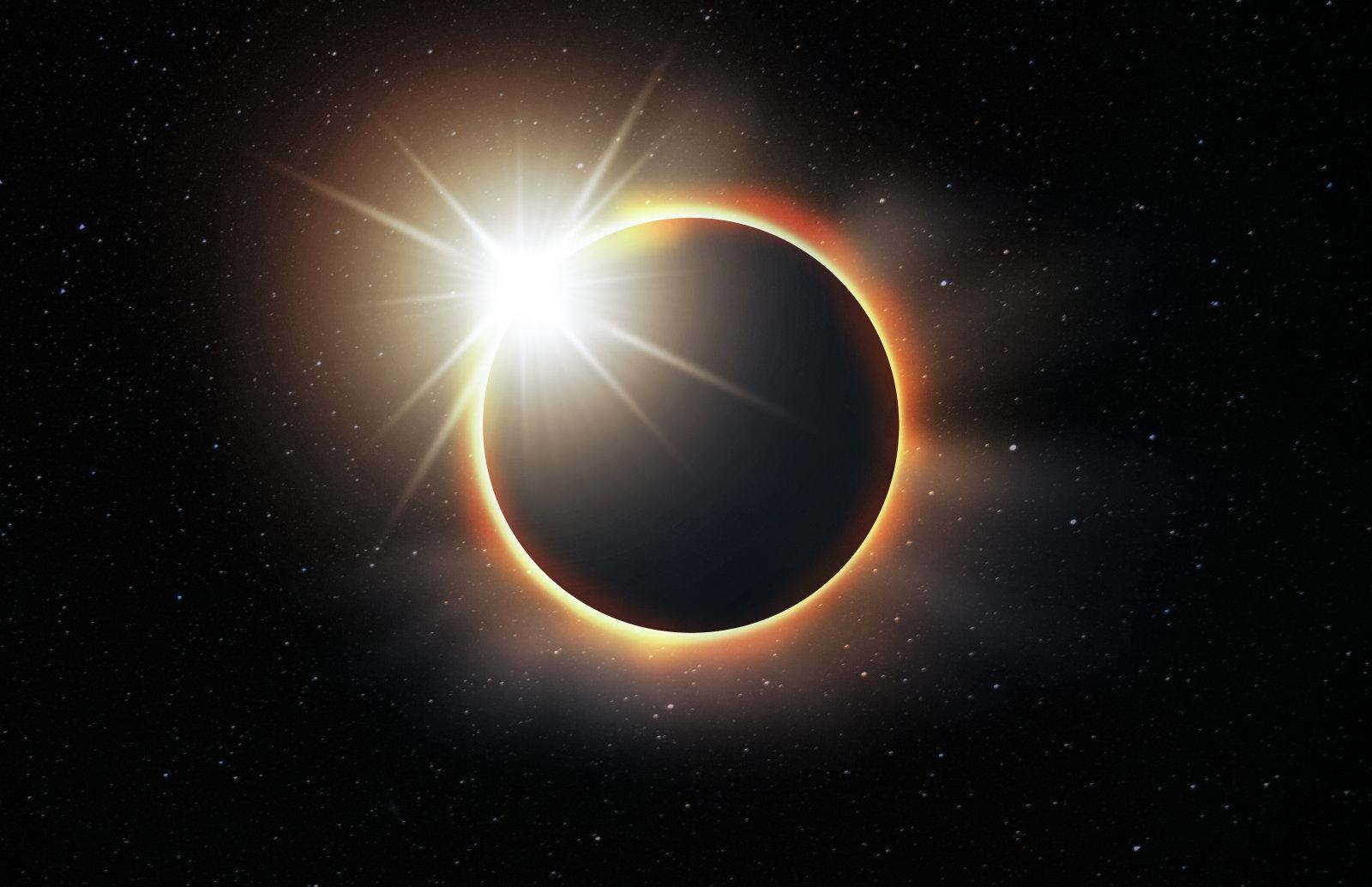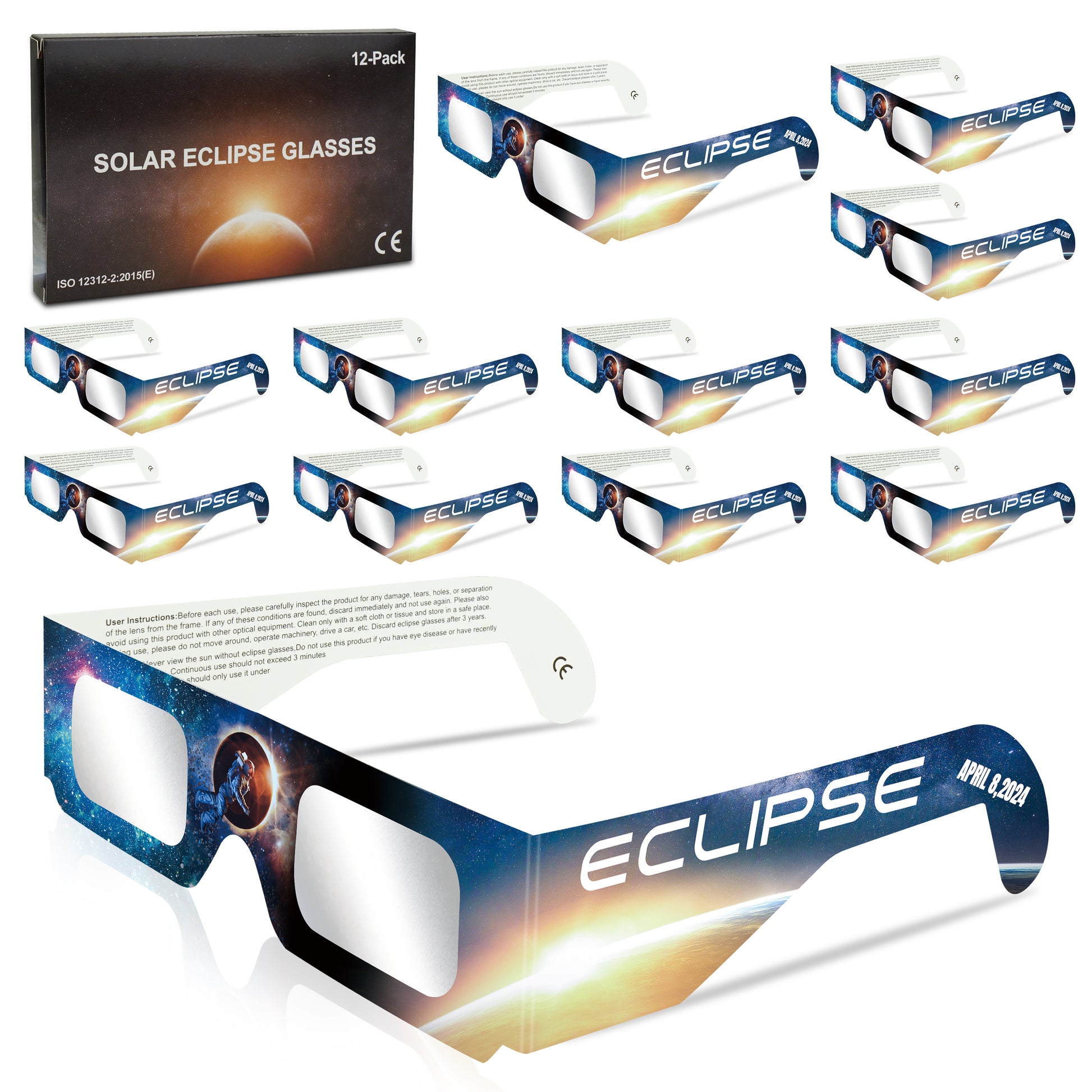
Solar Eclipse Glasses AAS Approved 2024
Buy 5+ Get 15% Off !
Share
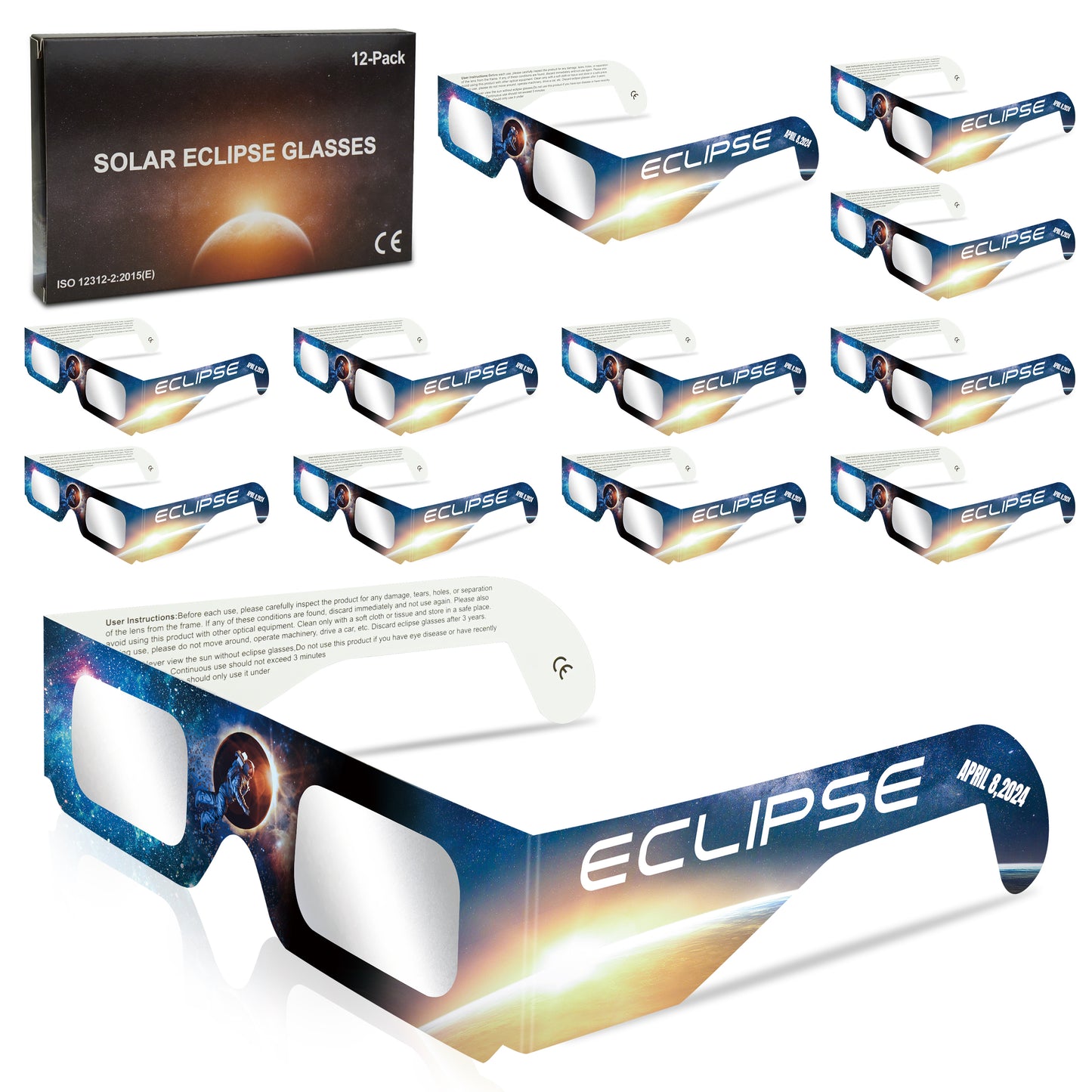
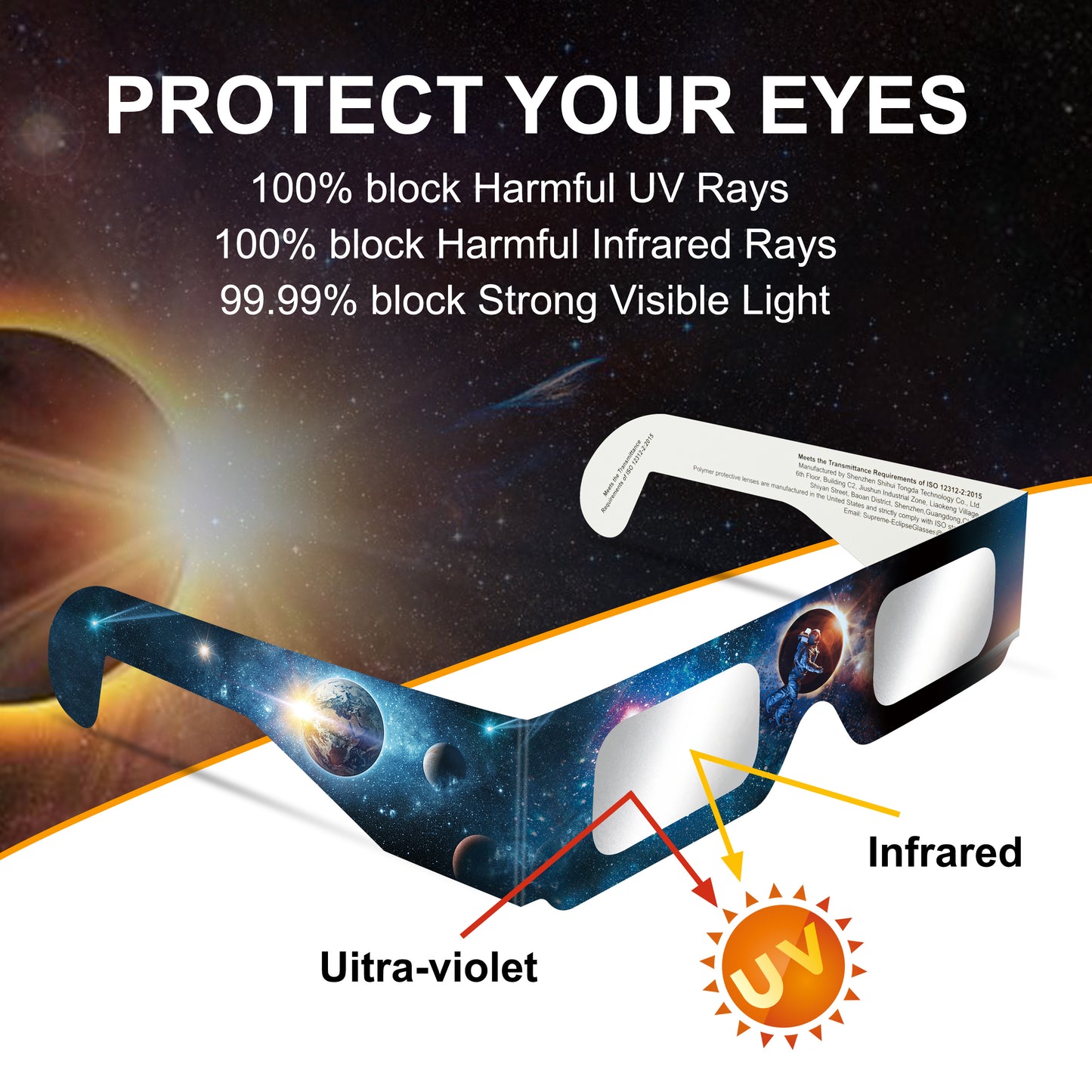
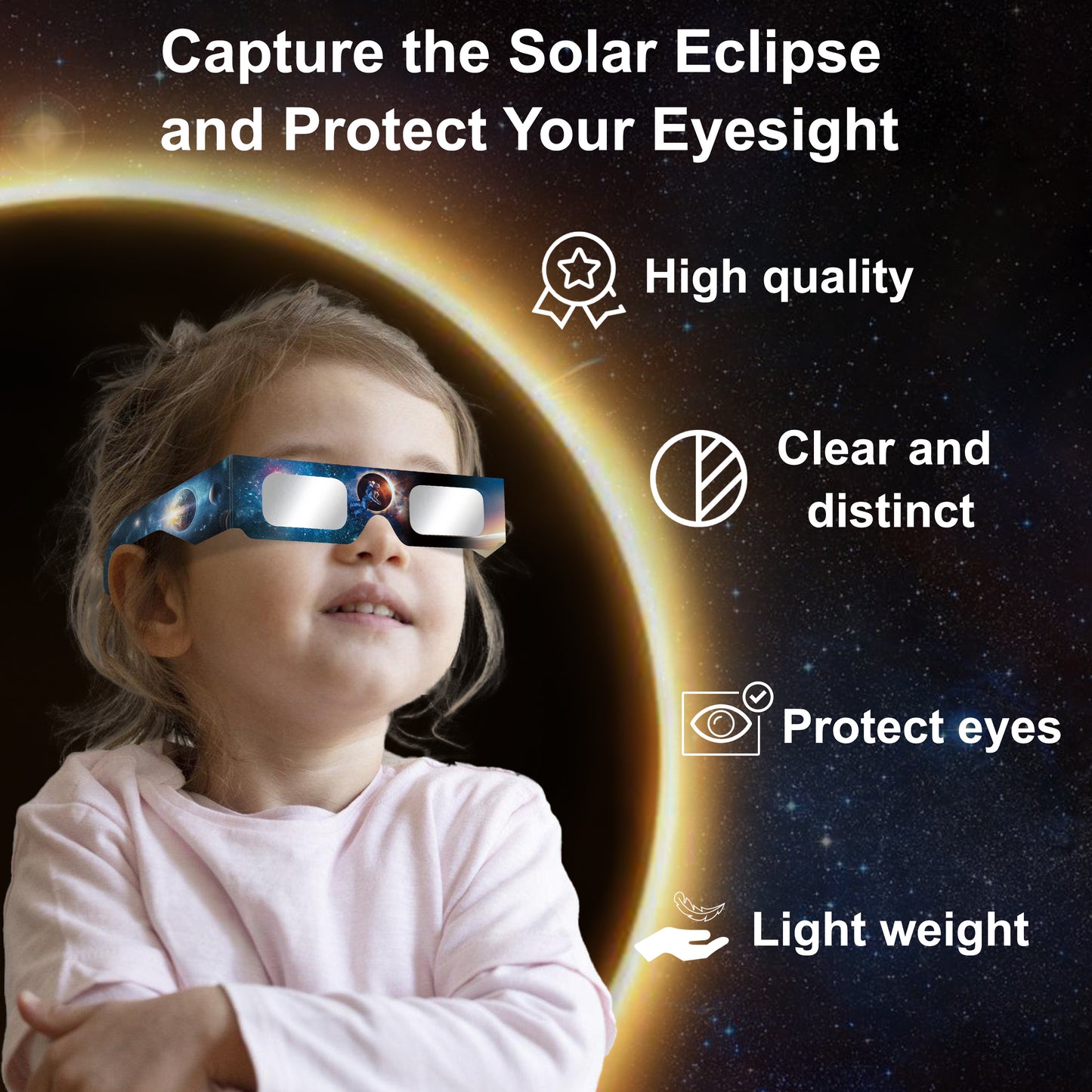
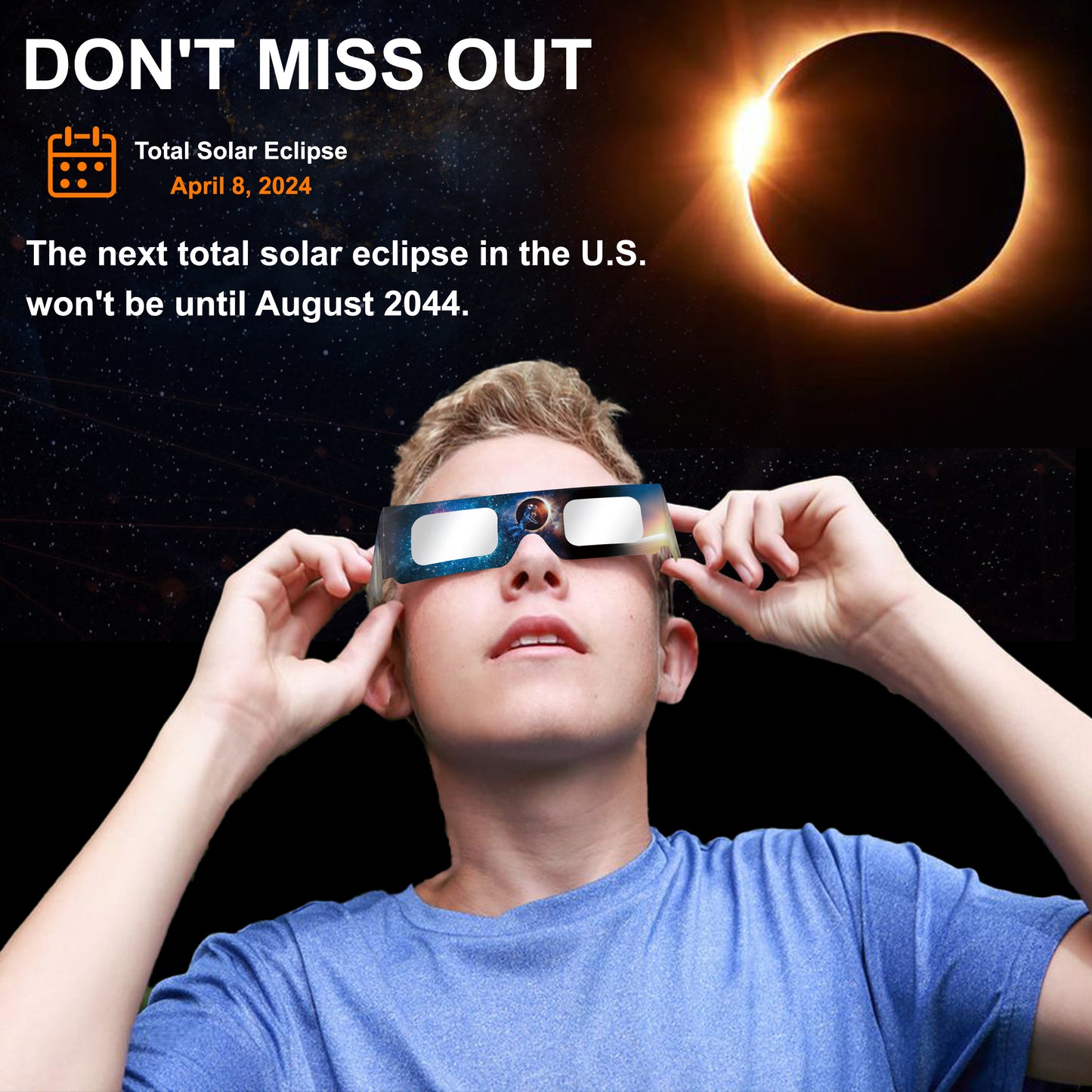
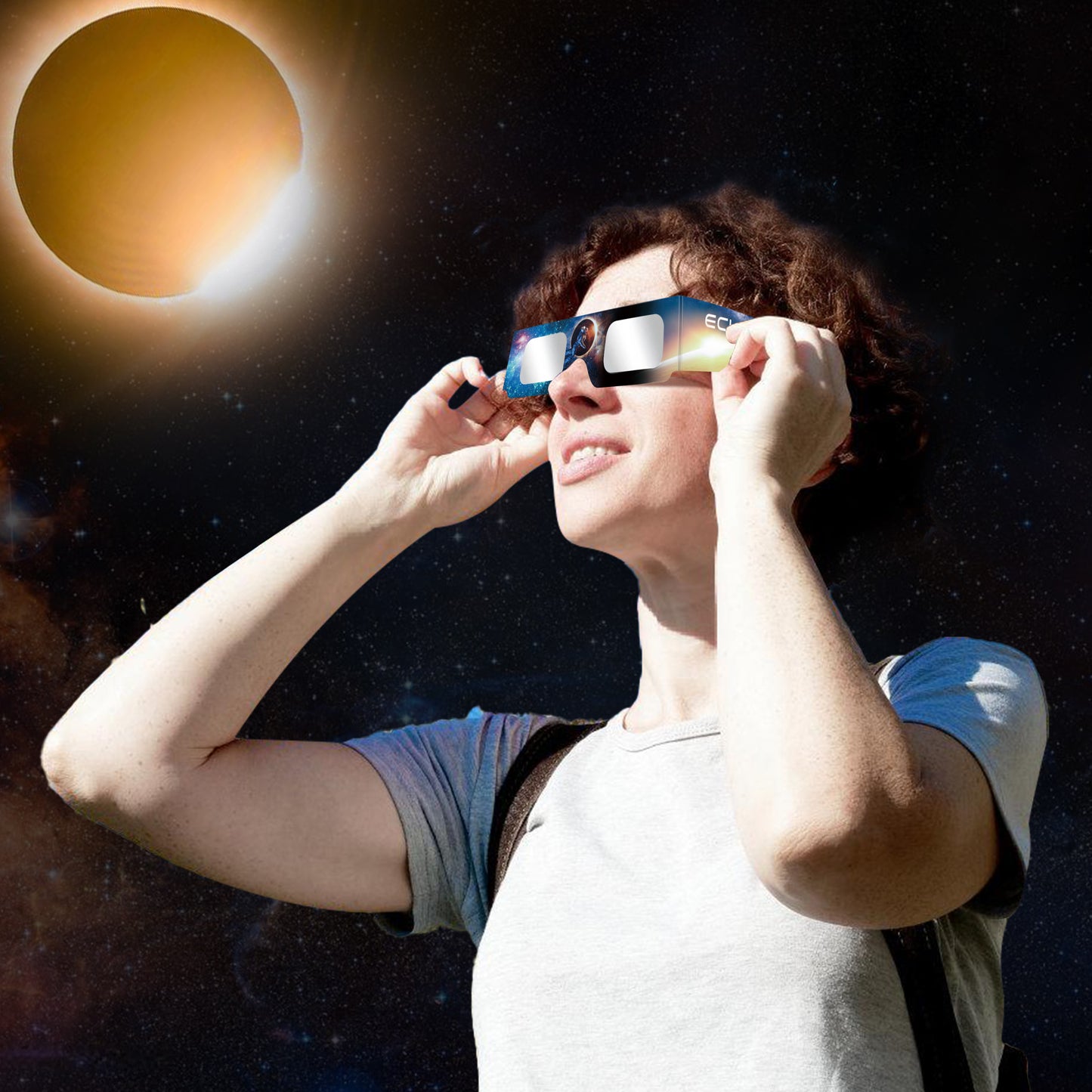
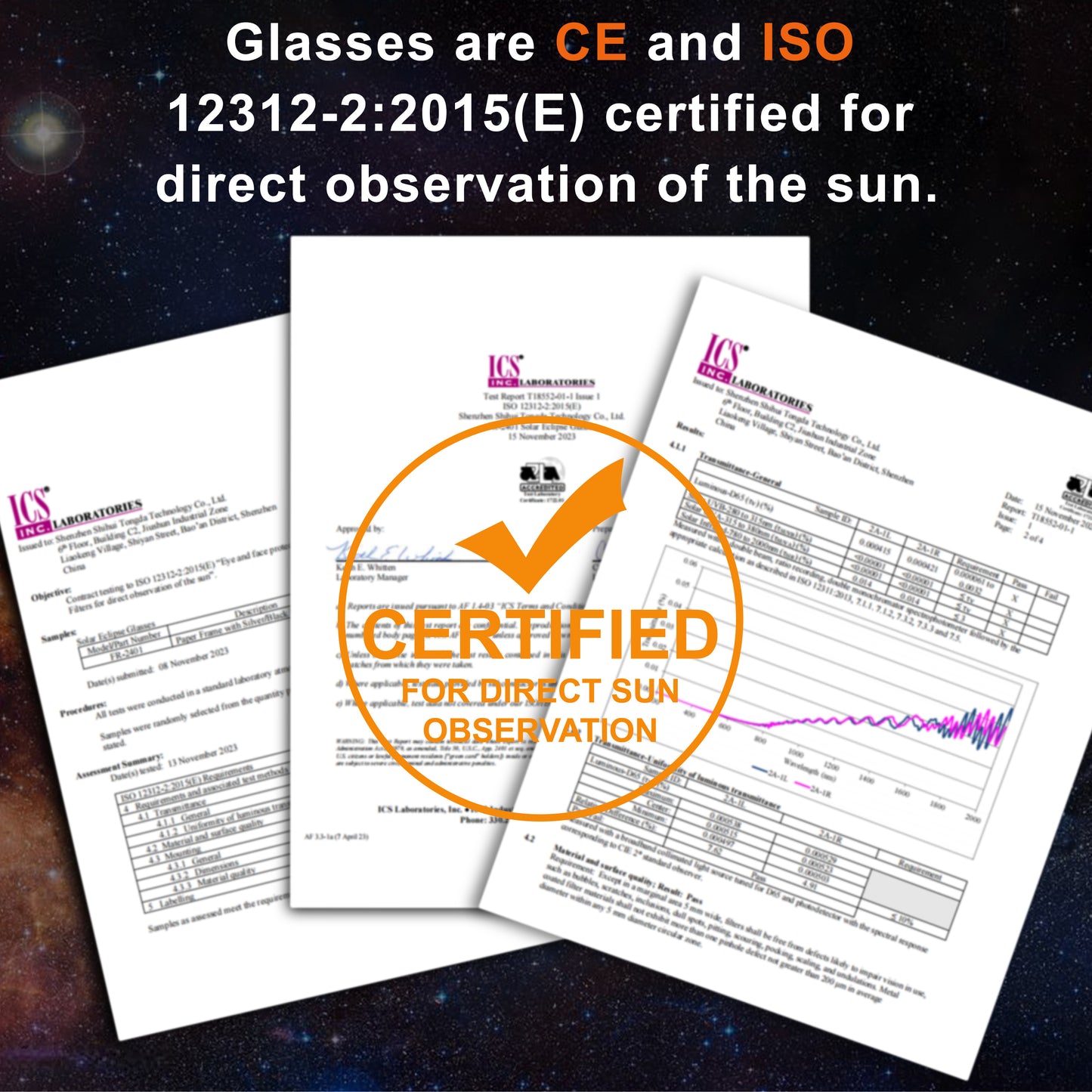
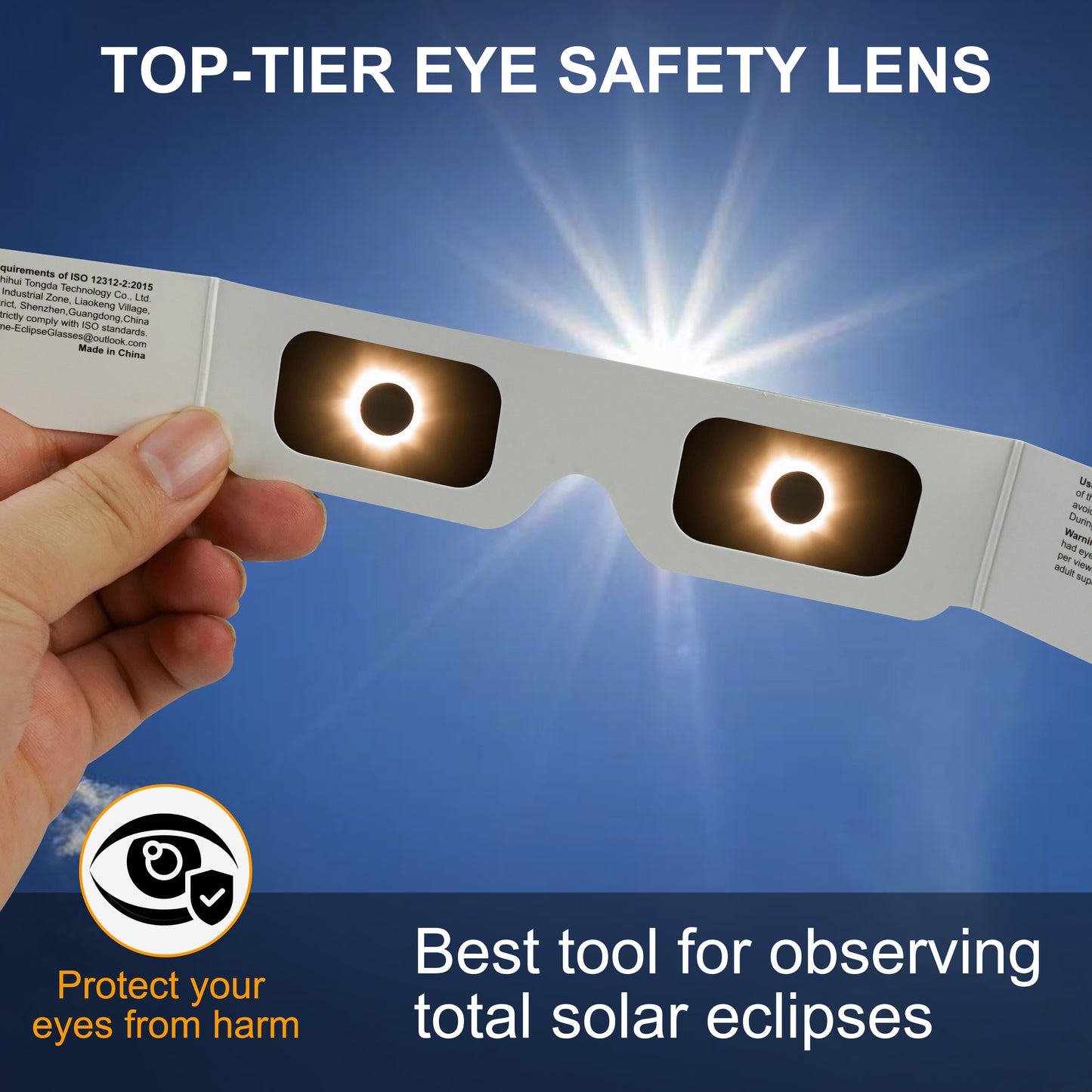
Collapsible content
What is a total solar eclipse?
A total solar eclipse occurs when the moon aligns with the sun, blocking out the star. Under the path traveled by the total eclipse, the sky darkens, the horizon glows like a sunset on all sides, and the wispy white streams of the sun's corona becomes visible. It is a rare event that only occurs every few years on Earth.
When is the eclipse?
April 8, 2024. They typically last for a few minutes. The exact time of day varies by location - check a map.
After April, there will be no more total eclipses over North America for a long time until the sun and moon align again.
The 2024 total eclipse will be the first total eclipse over Canada since February 26, 1979. Don't miss this one when it's so close to home!
Where can I see the eclipse? Can I still see it if I'm outside its path?
Totality can be seen along a path that starts in Mexico, stretches from Texas to Maine, and overlaps across the border into Ontario and Quebec before exiting over the Atlantic.
Outside this path, you will see a partial eclipse instead across the western hemisphere. The sky won't go dark, but the moon will still cover part of the sun and take a "bite" out of it. A partial eclipse will be visible in central America, the far west edges of Europe, and the pacific islands of Oceania.
Why do I need eclipse glasses? Can I use sunglasses instead?
You do not need eclipse glasses when the sun is COMPLETELY covered at totality. But, before and after the total eclipse, even a sliver of the sun can damage your eyes if you look at it too long.
The sun emits powerful UV and IR radiation that are magnified by the lens of your eye, causing retinal burns. Proper solar viewers can protect your eyes, but sunglasses do not filter the right kind of light to be effective, even when stacked together. They aren't strong enough to meet the ISO 12312-2 standard for looking at the sun. If they were, you wouldn't be able to see anything else with them on!
For a sharp image of the sun in a pleasing yellow-orange color, proper eclipse glasses are the best choice.
Other safe methods exist, but with subpar quality:
- Welding goggles give the sun an eerie green tint.
- Mylar produces a cold blue tint. Poorly made sheets may have pinholes that let light in.
- PInhole projectors that project an image of the eclipse onto a wall do not show the same amount of detail or colors as proper glasses do.
How do eclipse glasses work? What are they made of?
Our glasses use a silver-black polymer film made by Thousand Oaks Optical, a US-based company. They have a metallic coating outside surface and an absorptive material within the substrate, blocking 99.999% of incoming light energy from entering the instrument.
Can I take pictures of the eclipse with a solar filter?
Absolutely! The maker of the filters (Thousand Oaks Optical) states their silver-black polymer filter is ideal for visual and photographic use up to 100x magnification.
Just make sure to place the filter first in line between the sun and your camera, binoculars, etc., so you aren't magnifying an unfiltered stream of light into your eyes. Ensure the filter is properly fitted to your optical instrument without falling off or any gaps that would let too much light in.
The American Academy of Ophthalmology has posted a guide on safely photographing eclipses, linked here.
Can I use eclipse glasses with my prescription glasses?
Absolutely! You can wear both at the same time. Just make sure to place the eclipse viewers in front of your glasses. This is so they can filter the sun before it enters your glasses, protecting your vision from magnified UV/IR rays.
Depending on the size of your glasses, they can worn at the same time over your existing pair, attached with tape, or held in place with a spare hand.
Are these glasses safe to use?
Yes. They are safe for direct solar viewing. They have been independently tested to meet and conform to the ISO 12312-2:2015 standard. See our standards page for more information.
We only use glasses made in the USA by American Paper Optics,The ISO testing was performed by ICS laboratories, a US company.
Further verification can be provided by contacting us here.
